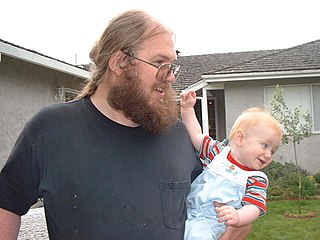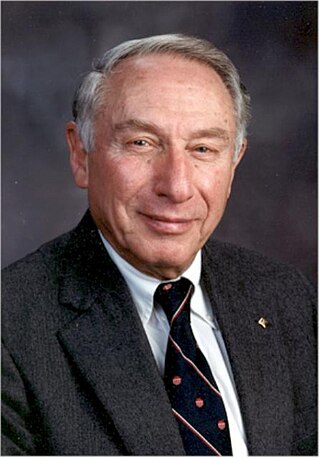Related Research Articles

Rendering or image synthesis is the process of generating a photorealistic or non-photorealistic image from a 2D or 3D model by means of a computer program. The resulting image is referred to as the render. Multiple models can be defined in a scene file containing objects in a strictly defined language or data structure. The scene file contains geometry, viewpoint, texture, lighting, and shading information describing the virtual scene. The data contained in the scene file is then passed to a rendering program to be processed and output to a digital image or raster graphics image file. The term "rendering" is analogous to the concept of an artist's impression of a scene. The term "rendering" is also used to describe the process of calculating effects in a video editing program to produce the final video output.

In 3-D computer graphics, ray tracing is a technique for modeling light transport for use in a wide variety of rendering algorithms for generating digital images.
Donna J. Cox is an American artist and scientist, Michael Aiken Endowed Chair; Professor of Art + Design; Director, Advanced Visualization Lab at the University of Illinois at Urbana-Champaign (UIUC); Director, Visualization and Experimental Technologies at National Center for Supercomputing Applications (NCSA); and Director, edream. She is a recognized pioneer in computer art and scientific visualization, specifically cinematic scientific visualization.

Blue Moon Rendering Tools, or BMRT, was one of the most famous RenderMan-compliant photorealistic rendering systems and was a precursor to NVIDIA's Gelato renderer. It was distributed as freeware. BMRT was a popular renderer with students and other people who were trying to learn the RenderMan interface. It also had some features PhotoRealistic RenderMan did not have at the time, for example, ray tracing, radiosity, volume rendering, and area lights. Even Pixar used BMRT for ray tracing before PRMan had such features. According to Exluna, it was used for 3D rendering in movies such as A Bug's Life, Stuart Little, The Cell, Hollow Man, and Woman on Top.

Ray-tracing hardware is special-purpose computer hardware designed for accelerating ray tracing calculations.

David A. Forsyth is a South-African-born American computer scientist and the Fulton Watson Copp Chair in Computer Science the University of Illinois at Urbana–Champaign.
Wen-mei Hwu is the Walter J. Sanders III-AMD Endowed Chair professor in Electrical and Computer Engineering in the Coordinated Science Laboratory at the University of Illinois at Urbana-Champaign. His research is on compiler design, computer architecture, computer microarchitecture, and parallel processing. He is a principal investigator for the petascale Blue Waters supercomputer, is co-director of the Universal Parallel Computing Research Center (UPCRC), and is principal investigator for the first NVIDIA CUDA Center of Excellence at UIUC. At the Illinois Coordinated Science Lab, Hwu leads the IMPACT Research Group and is director of the OpenIMPACT project – which has delivered new compiler and computer architecture technologies to the computer industry since 1987. From 1997 to 1999, Hwu served as the chairman of the Computer Engineering Program at Illinois. Since 2009, Hwu has served as chief technology officer at MulticoreWare Inc., leading the development of compiler tools for heterogeneous platforms. The OpenCL compilers developed by his team at MulticoreWare are based on the LLVM framework and have been deployed by leading semiconductor companies. In 2020, Hwu retired after serving 33 years in University of Illinois at Urbana-Champaign. Currently, Hwu is a Senior Distinguished Research Scientist at Nvidia Research and Emeritus Professor at University of Illinois at Urbana-Champaign.

Floyd Dunn was an American electrical engineer who made contributions to all aspects of the interaction of ultrasound and biological media. Dr. Dunn was a member of Scientific Committee 66 of the National Council on Radiation Protection and Measurements as well as many FDA, NIH, AIUM, and ASA committees. He collaborated with scientists in the UK, Japan, China and Post-Soviet states.

Eric Haines is an American software engineer and expert in computer graphics, specifically image rendering. Currently he is with NVIDIA Corporation as Distinguished Engineer. He is a co-author of the book Real-Time Rendering, currently in its fourth edition.

Andrew S. Glassner is an American expert in computer graphics, well known in computer graphics community as the originator and editor of the Graphics Gems series, An Introduction to Ray Tracing, and Principles of Digital Image Synthesis. His later interests include interactive fiction, writing and directing and consulting in computer game and online entertainment industries. He worked at the New York Institute of Technology Computer Graphics Lab.
The Champaign-Urbana Symphony Orchestra (CUSO) is a professional orchestra located in the Champaign-Urbana metropolitan area in central Illinois, United States. The Orchestra is the Professional Orchestra in Residence at the Krannert Center for the Performing Arts on the campus of the University of Illinois at Urbana-Champaign. The CUSO is led by Music Director and Conductor Stephen Alltop.

Computer graphics is a sub-field of computer science which studies methods for digitally synthesizing and manipulating visual content. Although the term often refers to the study of three-dimensional computer graphics, it also encompasses two-dimensional graphics and image processing.

Computer graphics deals with generating images and art with the aid of computers. Today, computer graphics is a core technology in digital photography, film, video games, digital art, cell phone and computer displays, and many specialized applications. A great deal of specialized hardware and software has been developed, with the displays of most devices being driven by computer graphics hardware. It is a vast and recently developed area of computer science. The phrase was coined in 1960 by computer graphics researchers Verne Hudson and William Fetter of Boeing. It is often abbreviated as CG, or typically in the context of film as computer generated imagery (CGI). The non-artistic aspects of computer graphics are the subject of computer science research.

The Scientific Computing and Imaging (SCI) Institute is a permanent research institute at the University of Utah that focuses on the development of new scientific computing and visualization techniques, tools, and systems with primary applications to biomedical engineering. The SCI Institute is noted worldwide in the visualization community for contributions by faculty, alumni, and staff. Faculty are associated primarily with the School of Computing, Department of Bioengineering, Department of Mathematics, and Department of Electrical and Computer Engineering, with auxiliary faculty in the Medical School and School of Architecture.
John Turner Whitted is an electrical engineer and computer scientist who introduced recursive ray tracing to the computer graphics community with his 1979 paper "An improved illumination model for shaded display". His algorithm proved to be a practical method of simulating global illumination, inspired many variations, and is in wide use today. Simple recursive implementations of ray tracing are still occasionally referred to as Whitted-style ray tracing.
Klaus Schulten was a German-American computational biophysicist and the Swanlund Professor of Physics at the University of Illinois at Urbana-Champaign. Schulten used supercomputing techniques to apply theoretical physics to the fields of biomedicine and bioengineering and dynamically model living systems. His mathematical, theoretical, and technological innovations led to key discoveries about the motion of biological cells, sensory processes in vision, animal navigation, light energy harvesting in photosynthesis, and learning in neural networks.
Vikram Adve is the Donald B. Gillies professor in the Department of Computer Science and a Professor in Electrical and Computer Engineering at the University of Illinois at Urbana-Champaign.
Alfred Inselberg was an American-Israeli mathematician and computer scientist based at Tel Aviv University.

Turing is the codename for a graphics processing unit (GPU) microarchitecture developed by Nvidia. It is named after the prominent mathematician and computer scientist Alan Turing. The architecture was first introduced in August 2018 at SIGGRAPH 2018 in the workstation-oriented Quadro RTX cards, and one week later at Gamescom in consumer GeForce RTX 20 series graphics cards. Building on the preliminary work of its HPC-exclusive predecessor, the Turing architecture introduces the first consumer products capable of real-time ray tracing, a longstanding goal of the computer graphics industry. Key elements include dedicated artificial intelligence processors and dedicated ray tracing processors. Turing leverages DXR, OptiX, and Vulkan for access to ray-tracing. In February 2019, Nvidia released the GeForce 16 series of GPUs, which utilizes the new Turing design but lacks the RT and Tensor cores.
Kavita Bala is an Indian computer scientist, academic and entrepreneur. She is a Professor in the Department of Computer Science at Cornell University. After serving as department chair from 2018–2020, she was appointed Dean of the Faculty for Computing and Information Science, now known as the Ann S. Bowers College of Computing and Information Science.
References
- ↑ Shirley, Peter [@Peter_shirley] (June 11, 2023). "Today is my 60th birthday ..." (Tweet). Retrieved October 8, 2023– via Twitter.
- ↑ "Peter Shirley". Google Scholar Citations. Retrieved May 6, 2017.
- ↑ Shirley, Peter; Marschner, Steve (July 21, 2009). Fundamentals of Computer Graphics (3rd ed.). A. K. Peters, Ltd. ISBN 978-1568814698.
- ↑ "CS 148: Introduction to Computer Graphics and Imaging". Stanford University. Retrieved May 6, 2017.
- ↑ "CV". Peter Shirley. Retrieved May 6, 2017.